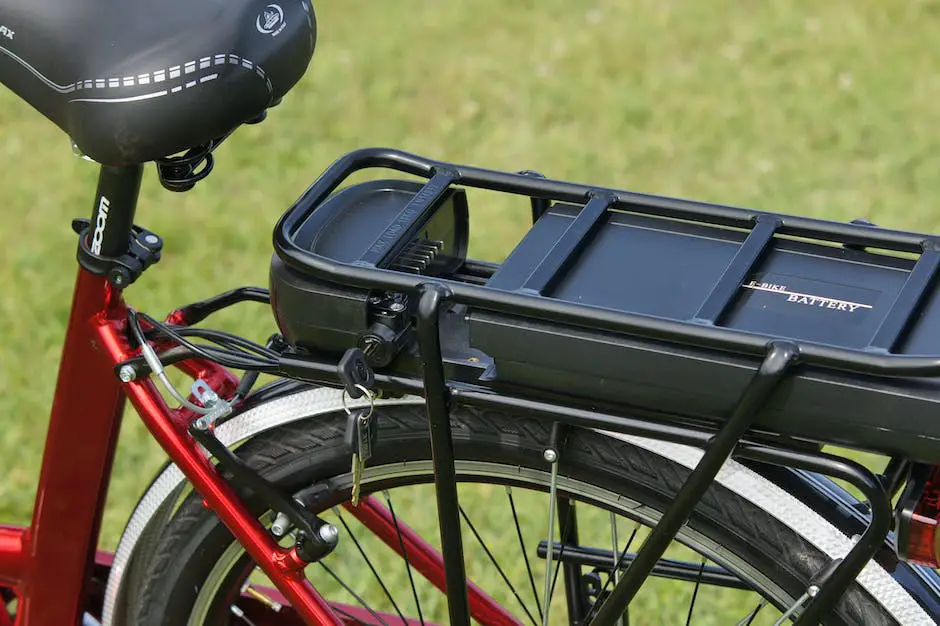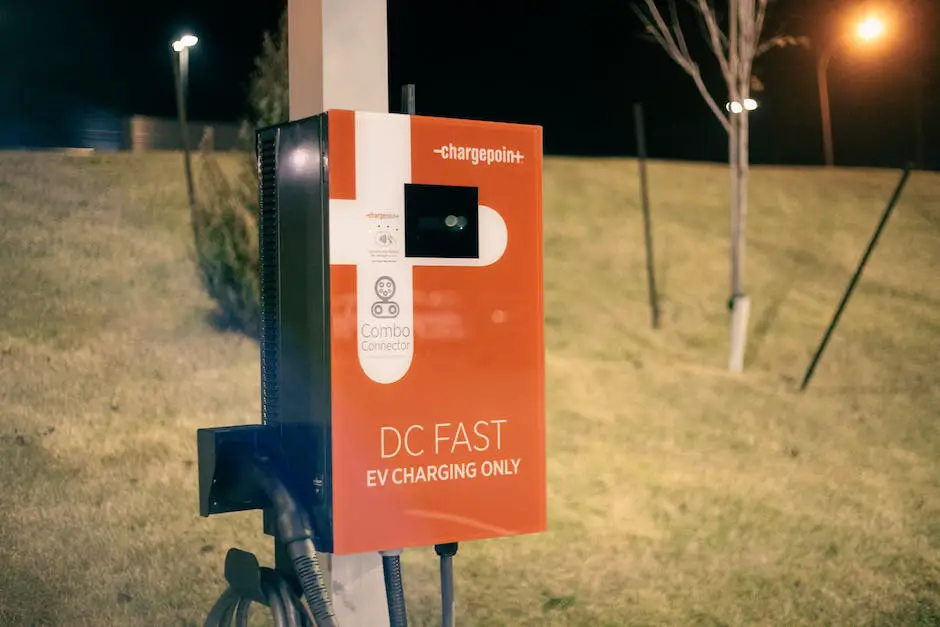Electric bikes, commonly known as e-bikes, are revolutionizing urban travel, offering riders a sustainable and efficient mode of transport. At the heart of every e-bike is its battery, a marvel of modern chemistry that supplies the necessary power for longer, more effortless journeys. But to maintain the vitality of these electric steeds, a firm understanding of e-bike battery basics is essential. From comprehending the nuanced differences in battery chemistry to recognizing the best practices for battery care, our navigation through the electric avenues begins here. As we pedal forward, we’ll also explore the eclectic range of charging stations dotting the landscape, delving into how they function, their diverse types, and the rapidly growing infrastructure sustaining our e-biking future. For e-bike enthusiasts and aspiring hobbyists keen to harness the full potential of their electric rides, there’s no better time to charge into the world of e-bike charging stations.
Understanding E-Bike Battery Basics
Unveiling the Powerhouse: The Guts of an E-Bike Battery
When you think of e-bikes, the first thing that probably whizzes into your mind is the unfettered joy of zipping up a steep incline without breaking a sweat. That magic happens thanks to the silent workhorse nestled in the frame – the e-bike battery. But have you ever wondered what’s actually inside that chunky little power vault that breathes life into your two-wheeled steed? Well, buckle up! Today we’re diving straight into the heart of an e-bike battery to uncover the wonders within.
E-bike batteries may come in various shapes and sizes, but they typically share a common assembly of components. Inside, they harbor a series of cells, often lithium-ion, that store the electrical energy you rely on for that extra push when pedaling seems like a chore. But why lithium-ion, you ask? These cells strike a balance between weight, capacity, and recharging cycles, making them an optimum choice for e-bike applications.
Now, these cells aren’t just plopped into the battery casing willy-nilly. They’re meticulously organized in series and parallel configurations to achieve the desired voltage and capacity. Think of series connections as a daisy chain boosting the voltage, while parallel connections multiply the battery’s capacity, ensuring you have enough juice to power through your rides.
Within the pack, a Battery Management System (BMS) acts as the brains of the operation. This electronic system manages the battery’s output, ensuring the cells discharge safely and efficiently while protecting them from overcharging, overheating, and taking too deep a dip (in voltage, that is). The BMS is pivotal in prolonging the life of the battery and keeping riders from having to push their e-bikes home. Not exactly the vision of fun, right?
E-bike batteries also contain a measure of defensive elements. These can consist of temperature sensors and fuses that leap into action should things get too hot to handle or if electrical interruptions rear their ugly heads. After all, keeping everything running smoothly and safely is paramount to enjoying the wind in your hair – helmet on, of course.
Packed snugly around these electrically charged innards, the outer case provides a sturdy shell, protecting the delicate contents from the rigors of the road—bumps, scrapes, and sometimes the odd splash. It’s also engineered to prevent the ingress of dust and water because e-biking adventurers don’t stop for a little foul weather.
However, it’s not just the electrical framework that deserves attention. The connectors and mounting points are essential too. They ensure the battery stays put over rough terrain and facilitates its removal and recharging with ease. A secure and straightforward interface between the battery and bike frame is critical because no one wants to deal with a rogue battery during a morning commute.
In sum, an e-bike battery is more than just a block of charge. It’s an intricate meld of chemistry, electronics, and smart design, all working in unison to ensure your ride is smooth, reliable, and downright exhilarating. Whether you’re an urban commuter or a trail connoisseur, remembering the marvel that propels you forward might just add another layer of appreciation to your e-biking experience. After all, without these unsung heroes, an e-bike would just be… well, a bike.

Types of E-Bike Charging Stations
The E-Biker’s Guide to Charging Stations: Powering Up Your Ride
E-bikers are always on the move, seeking adventure and exploring new terrain. But no matter how far the journey takes them, one fundamental need remains constant: keeping those e-bike batteries charged and ready to roll. As the world embraces the e-bike revolution, communities and businesses are stepping up their game, offering a variety of charging stations to suit the modern rider’s needs.
In the realm of charging stations, there’s a spectrum of options. At one end, there are the basic, no-frills plug-and-charge stations. These are typically found in public spaces such as parks, shopping areas, or outside coffee shops. Designed with simplicity in mind, they provide a standard electrical outlet where riders can plug in their chargers and top off their batteries while enjoying a break.
Stepping up from the basics, some stations cater specifically to the e-biking community, offering secure docking ports and faster charging capabilities. These specialized hubs often feature multiple charging points and support various e-bike models, ensuring that riders can quickly get back on the road. They might also include a display to show charging status and even the health of the battery being charged.
Furthermore, tech-savvy riders will appreciate smart charging stations. These are integrated with apps and offer a range of services. Users can monitor their charging progress, reserve a charging slot ahead of arrival, and even pay for the service through their smartphones. Some even provide diagnostic services or map integration, guiding riders to the nearest available charging point.
When it comes to commercial establishments, e-bikers can often find more deluxe charging offerings. For instance, some cafes or restaurants may offer complimentary charging as a courtesy to customers. These tend to be more comfortable settings where you can grab a bite or a drink while your e-bike gets its much-needed energy boost.
Adventure parks, biking trails, and resorts are also getting in on the action, sometimes incorporating charging facilities right into the natural landscape. These charging points are strategically located to provide a seamless experience, allowing for longer rides without the anxiety of a drained battery.
Finally, for the e-bike commuters, there’s a rise in workplace charging solutions. Progressive employers recognize the benefits of e-biking and are now offering charging stations in the office parking lots. This is a game-changer for employees, making the commute both eco-friendly and worry-free.
With such a variety of charging stations popping up everywhere, e-bikers are finding it increasingly convenient to maintain their bikes ready for action. It’s never been easier to enjoy the freedom of the open road, knowing that a power boost is just around the corner. Whether popping into a café or planning a long-distance trail ride, the e-biking community can rest assured that the infrastructure for their beloved hobby is growing stronger every day.

The Growth of E-Bike Charging Infrastructure
With the understanding that e-bikes are not just a passing trend but an integral component of future urban mobility and recreational adventure, the expansion of the e-bike charging network has become a focal point for cities, businesses, and outdoor enthusiasts.
The surge in e-bike popularity compels a deeper look into the growing infrastructure that supports these eco-friendly vehicles.
At the heart of this infrastructural evolution are basic plug-and-charge stations peppered across public spaces. These stations, often found in parking areas, shopping centers, and public parks, provide riders with the convenience of charging while running errands or enjoying outdoor activities.
But the e-bike experience is further enhanced by specialized charging hubs that have emerged. These hubs are not just about plugging in; they offer high-speed charging options that significantly reduce the wait time. Places like these, sometimes branded as e-bike charging stations, are equipped with advanced docking ports that secure bikes against theft during charging—a win-win for peace of mind and power top-up.
Innovative smart charging stations are upping the game with technology integration, featuring apps that allow riders to locate the nearest charging point, check availability, and even reserve a spot. This digital leap often comes with extra frills, including membership perks, maintenance facilities, and community events, fostering a vibrant e-biking culture.
The initiative has also seen a rise in local businesses incorporating e-bike charging into their customer service. Cafes and restaurants with an environmentally conscious ethos are attracting e-bike riders by offering complimentary charging facilities. This is a clever move that not only supports sustainable transport but also encourages potential customers to visit and linger.
Adventure doesn’t have to wait when one is surrounded by nature. E-bike charging facilities are making their way into more natural settings like adventure parks and along popular cycling trails. Riders can now explore without the fear of running out of battery, thanks to strategically located charging stations ready to rejuvenate both riders and e-bikes for extended fun.
Lastly, e-bike charging solutions are making a strong presence in the workplace. With more people switching to e-bikes for their daily commute, employers are recognizing the need for accessible charging facilities. This workplace charging solution provides commuters with the security that their e-bike will be ready for the ride home at the end of the day.
As e-mobility continues to evolve, the charging network infrastructure is expected to grow, diversify, and adapt to the changing demands of e-bike enthusiasts everywhere. This expansion signifies much more than just practicality—it is the foundation upon which the e-biking lifestyle thrives.

Installing an E-Bike Charging Station at Home
How to Create a Personal E-Bike Charging Station at Home
E-bikes have surged in popularity, leading to an evolution of charging solutions, from public spaces to your very own home. For those newfound enthusiasts and seasoned pedal-pushers alike, setting up a personal e-bike charging spot can be a game-changer. Here’s a guide on transforming a little nook into a power-up haven for your beloved e-bike.
Choosing Your Charging Space: Safety and Convenience
Safety comes first. Choose a non-cluttered area, preferably a garage or a covered space that’s free from moisture and excessive dust. This ensures protection from the elements and mitigates any fire risks.
Accessibility is another key feature. This space should offer easy access to your e-bike, allowing for a seamless plug-in and charge routine after a long ride.
Electrical Essentials: Power Source and Surge Protection
Your charging area must have a dedicated electrical outlet. It’s like a trusty sidekick for your charging needs. A standard 110V outlet typically suffices for most e-bike chargers. If your charging routine involves high current draws, consider having an electrician install a dedicated circuit to handle the load.
Maximize protection with a surge protector. It’s like a defensive line for your e-bike’s battery, safeguarding it from electrical surges that might spell trouble for your battery’s longevity.
Charger Station Set-Up: Organized and Efficient
Craft a personalized charging dock. Mount a shelf or install a small cabinet to store the charger and accessories. Think efficiency—having your gear in one place means no more hunting for that elusive charging cable.
If your e-bike battery is removable, you might want a designated spot to charge the battery outside of the bike. A foam-lined drawer could be a cushy cradle for your battery to rest and recharge.
Cable Management: A Tangle-Free Zone
Say goodbye to cord spaghetti. Invest in cable organizers or hooks to keep charging cords neatly stowed when not in use. This doesn’t just thwart tangles; it keeps your charging spot looking sharp and decreases trip hazards.
Charging Etiquette: Best Practices
Be a mindful charger. Unplug your e-bike once it’s fully charged to conserve energy and maintain battery health. Overcharging can be detrimental, shortening the life of your battery.
If you ride infrequently, maintain the battery charge between 40-80%. This is the sweet spot, like a comfy hammock for your battery’s electrons, providing balance and promoting longer battery life.
Customization: Personal Flair
Make this space yours. A custom vinyl decal of your favorite trail, a framed photo of a memorable ride, or LED lighting for that extra pizzazz can add a personal touch. Your charging station should not only be practical but also a celebration of your e-biking adventures.
Maintenance: Regular Check-Ins
Keep an eye out. Regularly inspect your charging area for any wear and tear to cables or signs of electrical issues. Vigilance is the trusty watchdog for a safe charging environment.
The Long View: Future-Proofing Your Setup
As technology advances, keep an open mind to upgrading your charging setup. Whether that means incorporating smart charging technology or adjusting to new battery standards, staying informed will ensure your station endures as a robust part of your e-biking experience.
Setting up your personal e-bike charging spot is the beginning of smarter and more efficient riding. By tailoring a space that suits both your practical needs and personal style, you ensure a seamless transition from the thrill of the ride to the tranquility of recharging, readying you for your next e-biking adventure.

E-Bike Charging Etiquette and Safety Practices
Navigating the Nuances of E-Bike Charging Etiquette and Safety Protocols
E-bike enthusiasts know there’s more to the ride than just the thrill of the open trail or the satisfaction of breezing past traffic during the morning commute. The journey may start with a single pedal stroke, but it doesn’t end there. Charging your electric steed is not only about plugging it in and walking away. It’s about understanding the charging process, respecting etiquette, and prioritizing safety.
Charging etiquette may not be the first thing that comes to mind, but as the e-bike community grows, understanding the unspoken rules is pivotal. For starters, public charging spots are shared resources, so timing is key. Don’t be the electron hog who leaves their bike plugged in all day—a couple of hours should suffice to give the battery the boost it needs. While waiting, it’s courteous to make way for fellow riders, ensuring everyone has a chance to recharge.
When it comes to charging at home, insight into electrical demands is crucial. Overloading circuits is a no-no, and it pays to know the limits of your home electrical system. If in doubt, consult a professional who can advise or even install a dedicated line for safety and convenience.
While we talk of safety, let’s delve into the proper handling and care of batteries. They are the lifeblood of an e-bike and demand respect. Always use the charger provided with the e-bike or one approved by the manufacturer. Counterfeit or inappropriate chargers are notorious for causing harm—not just to the battery but potentially causing electrical fires.
Also, let’s not ignore the environment that the e-bike and its battery live in. Extreme temperatures are enemies of lithium-ion batteries, so storing and charging your e-bike in a moderate climate extends battery life and improves performance. Overexposure to intense heat or cold can lead to decreased battery efficiency and longevity.
The physical condition of your battery and charger should be part of your regular e-bike check-up. Look for any damage, wear, or tear that could indicate an internal issue or pose an external risk. A frayed cable or a dented battery case isn’t just an aesthetic concern—it’s a call to action for the safety-conscious rider.
Balancing a battery’s charge levels is also part of the etiquette. It’s not all about keeping your battery topped off; it’s about understanding the sweet spot. Frequent full discharges can put undue strain on the battery, while constantly charging to full might not be ideal either. Aim for the golden range—between 20% and 80%—to maximize the cycle life of your e-bike’s battery.
And just like the bikes they fuel, batteries evolve. Staying abreast of developments in battery technology will prepare you for future advances and ensure that your charging practices remain safe and efficient. The e-bike charging landscape is changing, and build your knowledge apace.
Remember, whether you’re gearing up for a long haul or just topping off for a quick jaunt, the way you charge can make a difference. From personal setup to public spaces, awareness of the details shapes the e-bike experience. It’s the mark of a mature and responsible community, and it paves the way for the sustainable growth of our beloved hobby. Keep rolling safely, responsibly, and with consideration for those who share this electrified passion.

The journey through the electrified realm of e-bikes and their lifelines—the charging stations—reveals a glimpse into a future where travel is quieter, cleaner, and more connected. Installing a charging haven at home can transform one’s relationship with their e-bike, melding convenience with sustainability. Meanwhile, embracing safety and etiquette at public docks fosters a culture of mutual respect and care among the e-bike community. As we traverse this evolving landscape, riders are not merely passengers but active contributors to an eco-friendly revolution on two wheels. By understanding and embracing the intricate web of e-bike charging—from the individual cells that power our rides to the communal hubs that energize our cities—we pave the way for a brighter, greener path forward, where every pedal and every charge propels us toward a more harmonious relationship with our environment and each other.

